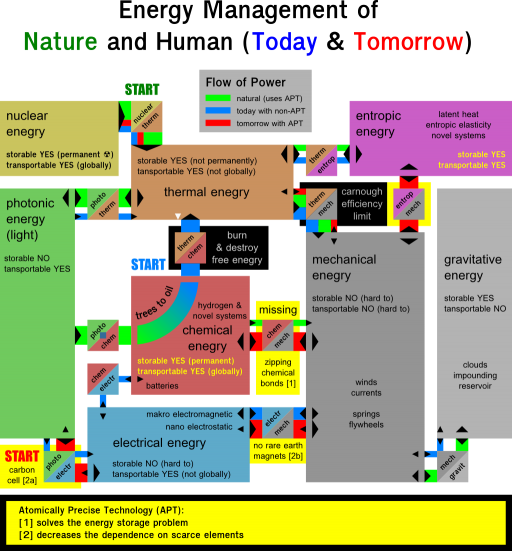Difference between revisions of "Energy conversion"
From apm
(added the diagram from the page Global scale energy management here too) |
(→Related: cleanup and split-off of of == External Links ==) |
||
| Line 42: | Line 42: | ||
* [[Global scale energy management]] | * [[Global scale energy management]] | ||
| − | * | + | * [[Energy transmission]] |
| − | + | ||
| + | == External links == | ||
| + | |||
| + | * Wikipedia: [http://en.wikipedia.org/wiki/Transducer transducer], actuators, ... | ||
Revision as of 14:35, 24 May 2021
Atomically precise technology for energy conversion can:
- solve the enegry storage problem making renewable energy storable and fossile or nuclear fission baseload power plants unnecessary
- circumvent burning processes that unnecessarily devaluates energy
[Todo: add infographic]
Different power converters have heterogeneity residing on different size scales.
Contents
Nanoscale: molecular power converters
AP technology provides several possibilities for energy conversion that work in a mill/zip/conveyor belt like style:
- chemomechanical converters
- electromechanical converters - the link for massive and efficient energy storage that is missing today
- entropomechanical converters
- optoelectric / solarelectric
Mesoscale
thermomechanical:
diamondoid heat pump system
Used base technologies can be: microcapsules, infinitesimal bearings and thermal switching cells
Note that although the efficiency is limited by the Carnough-cycle the conversion can be near reversible.
Makroscale
thermonuclear
Complex macroscopic systems made from advanced diamondoid metamaterials may lead to significant improvements here.
Related
External links
- Wikipedia: transducer, actuators, ...
